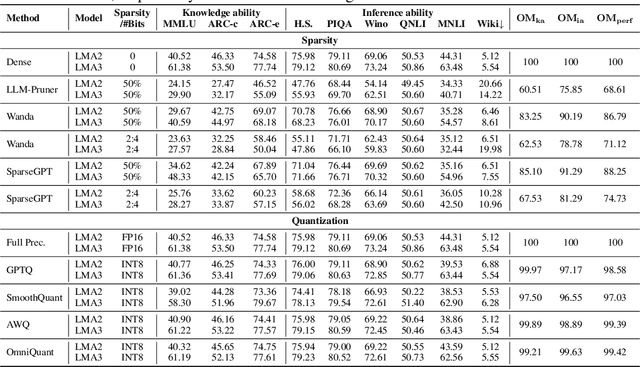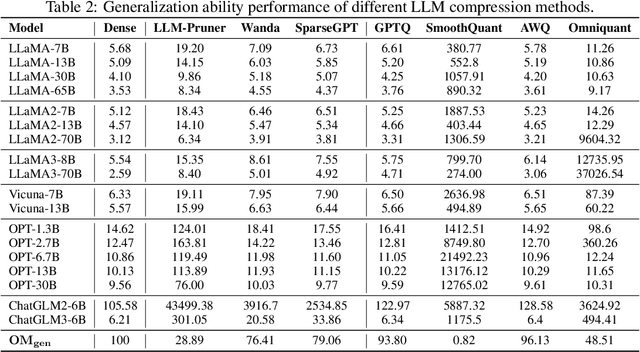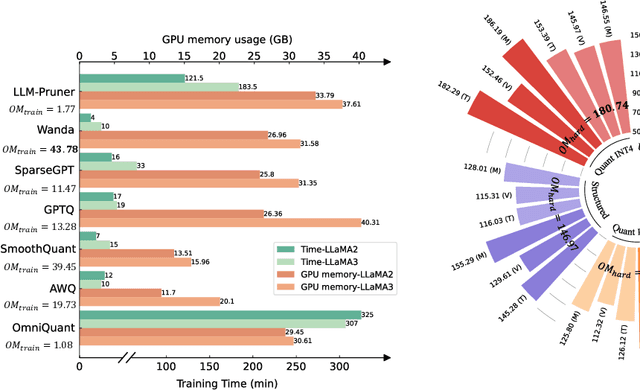Aishan Liu
Towards Understanding the Safety Boundaries of DeepSeek Models: Evaluation and Findings
Mar 19, 2025Abstract:This study presents the first comprehensive safety evaluation of the DeepSeek models, focusing on evaluating the safety risks associated with their generated content. Our evaluation encompasses DeepSeek's latest generation of large language models, multimodal large language models, and text-to-image models, systematically examining their performance regarding unsafe content generation. Notably, we developed a bilingual (Chinese-English) safety evaluation dataset tailored to Chinese sociocultural contexts, enabling a more thorough evaluation of the safety capabilities of Chinese-developed models. Experimental results indicate that despite their strong general capabilities, DeepSeek models exhibit significant safety vulnerabilities across multiple risk dimensions, including algorithmic discrimination and sexual content. These findings provide crucial insights for understanding and improving the safety of large foundation models. Our code is available at https://github.com/NY1024/DeepSeek-Safety-Eval.
Adversarial Training for Multimodal Large Language Models against Jailbreak Attacks
Mar 05, 2025Abstract:Multimodal large language models (MLLMs) have made remarkable strides in cross-modal comprehension and generation tasks. However, they remain vulnerable to jailbreak attacks, where crafted perturbations bypass security guardrails and elicit harmful outputs. In this paper, we present the first adversarial training (AT) paradigm tailored to defend against jailbreak attacks during the MLLM training phase. Extending traditional AT to this domain poses two critical challenges: efficiently tuning massive parameters and ensuring robustness against attacks across multiple modalities. To address these challenges, we introduce Projection Layer Against Adversarial Training (ProEAT), an end-to-end AT framework. ProEAT incorporates a projector-based adversarial training architecture that efficiently handles large-scale parameters while maintaining computational feasibility by focusing adversarial training on a lightweight projector layer instead of the entire model; additionally, we design a dynamic weight adjustment mechanism that optimizes the loss function's weight allocation based on task demands, streamlining the tuning process. To enhance defense performance, we propose a joint optimization strategy across visual and textual modalities, ensuring robust resistance to jailbreak attacks originating from either modality. Extensive experiments conducted on five major jailbreak attack methods across three mainstream MLLMs demonstrate the effectiveness of our approach. ProEAT achieves state-of-the-art defense performance, outperforming existing baselines by an average margin of +34% across text and image modalities, while incurring only a 1% reduction in clean accuracy. Furthermore, evaluations on real-world embodied intelligent systems highlight the practical applicability of our framework, paving the way for the development of more secure and reliable multimodal systems.
ELBA-Bench: An Efficient Learning Backdoor Attacks Benchmark for Large Language Models
Feb 22, 2025Abstract:Generative large language models are crucial in natural language processing, but they are vulnerable to backdoor attacks, where subtle triggers compromise their behavior. Although backdoor attacks against LLMs are constantly emerging, existing benchmarks remain limited in terms of sufficient coverage of attack, metric system integrity, backdoor attack alignment. And existing pre-trained backdoor attacks are idealized in practice due to resource access constraints. Therefore we establish $\textit{ELBA-Bench}$, a comprehensive and unified framework that allows attackers to inject backdoor through parameter efficient fine-tuning ($\textit{e.g.,}$ LoRA) or without fine-tuning techniques ($\textit{e.g.,}$ In-context-learning). $\textit{ELBA-Bench}$ provides over 1300 experiments encompassing the implementations of 12 attack methods, 18 datasets, and 12 LLMs. Extensive experiments provide new invaluable findings into the strengths and limitations of various attack strategies. For instance, PEFT attack consistently outperform without fine-tuning approaches in classification tasks while showing strong cross-dataset generalization with optimized triggers boosting robustness; Task-relevant backdoor optimization techniques or attack prompts along with clean and adversarial demonstrations can enhance backdoor attack success while preserving model performance on clean samples. Additionally, we introduce a universal toolbox designed for standardized backdoor attack research, with the goal of propelling further progress in this vital area.
CogMorph: Cognitive Morphing Attacks for Text-to-Image Models
Jan 21, 2025Abstract:The development of text-to-image (T2I) generative models, that enable the creation of high-quality synthetic images from textual prompts, has opened new frontiers in creative design and content generation. However, this paper reveals a significant and previously unrecognized ethical risk inherent in this technology and introduces a novel method, termed the Cognitive Morphing Attack (CogMorph), which manipulates T2I models to generate images that retain the original core subjects but embeds toxic or harmful contextual elements. This nuanced manipulation exploits the cognitive principle that human perception of concepts is shaped by the entire visual scene and its context, producing images that amplify emotional harm far beyond attacks that merely preserve the original semantics. To address this, we first construct an imagery toxicity taxonomy spanning 10 major and 48 sub-categories, aligned with human cognitive-perceptual dimensions, and further build a toxicity risk matrix resulting in 1,176 high-quality T2I toxic prompts. Based on this, our CogMorph first introduces Cognitive Toxicity Augmentation, which develops a cognitive toxicity knowledge base with rich external toxic representations for humans (e.g., fine-grained visual features) that can be utilized to further guide the optimization of adversarial prompts. In addition, we present Contextual Hierarchical Morphing, which hierarchically extracts critical parts of the original prompt (e.g., scenes, subjects, and body parts), and then iteratively retrieves and fuses toxic features to inject harmful contexts. Extensive experiments on multiple open-sourced T2I models and black-box commercial APIs (e.g., DALLE-3) demonstrate the efficacy of CogMorph which significantly outperforms other baselines by large margins (+20.62\% on average).
Red Pill and Blue Pill: Controllable Website Fingerprinting Defense via Dynamic Backdoor Learning
Dec 16, 2024



Abstract:Website fingerprint (WF) attacks, which covertly monitor user communications to identify the web pages they visit, pose a serious threat to user privacy. Existing WF defenses attempt to reduce the attacker's accuracy by disrupting unique traffic patterns; however, they often suffer from the trade-off between overhead and effectiveness, resulting in less usefulness in practice. To overcome this limitation, we introduce Controllable Website Fingerprint Defense (CWFD), a novel defense perspective based on backdoor learning. CWFD exploits backdoor vulnerabilities in neural networks to directly control the attacker's model by designing trigger patterns based on network traffic. Specifically, CWFD injects only incoming packets on the server side into the target web page's traffic, keeping overhead low while effectively poisoning the attacker's model during training. During inference, the defender can influence the attacker's model through a 'red pill, blue pill' choice: traces with the trigger (red pill) lead to misclassification as the target web page, while normal traces (blue pill) are classified correctly, achieving directed control over the defense outcome. We use the Fast Levenshtein-like distance as the optimization objective to compute trigger patterns that can be effectively associated with our target page. Experiments show that CWFD significantly reduces RF's accuracy from 99% to 6% with 74% data overhead. In comparison, FRONT reduces accuracy to only 97% at similar overhead, while Palette achieves 32% accuracy with 48% more overhead. We further validate the practicality of our method in a real Tor network environment.
PTSBench: A Comprehensive Post-Training Sparsity Benchmark Towards Algorithms and Models
Dec 10, 2024Abstract:With the increased attention to model efficiency, post-training sparsity (PTS) has become more and more prevalent because of its effectiveness and efficiency. However, there remain questions on better practice of PTS algorithms and the sparsification ability of models, which hinders the further development of this area. Therefore, a benchmark to comprehensively investigate the issues above is urgently needed. In this paper, we propose the first comprehensive post-training sparsity benchmark called PTSBench towards algorithms and models. We benchmark 10+ PTS general-pluggable fine-grained techniques on 3 typical tasks using over 40 off-the-shelf model architectures. Through extensive experiments and analyses, we obtain valuable conclusions and provide several insights from both algorithms and model aspects. Our PTSBench can provide (1) new observations for a better understanding of the PTS algorithms, (2) in-depth and comprehensive evaluations for the sparsification ability of models, and (3) a well-structured and easy-integrate open-source framework. We hope this work will provide illuminating conclusions and advice for future studies of post-training sparsity methods and sparsification-friendly model design. The code for our PTSBench is released at \href{https://github.com/ModelTC/msbench}{https://github.com/ModelTC/msbench}.
CopyrightShield: Spatial Similarity Guided Backdoor Defense against Copyright Infringement in Diffusion Models
Dec 02, 2024Abstract:The diffusion model has gained significant attention due to its remarkable data generation ability in fields such as image synthesis. However, its strong memorization and replication abilities with respect to the training data also make it a prime target for copyright infringement attacks. This paper provides an in-depth analysis of the spatial similarity of replication in diffusion model and leverages this key characteristic to design a method for detecting poisoning data. By employing a joint assessment of spatial-level and feature-level information from the detected segments, we effectively identify covertly dispersed poisoned samples. Building upon detected poisoning data, we propose a novel defense method specifically targeting copyright infringement attacks by introducing a protection constraint term into the loss function to mitigate the impact of poisoning. Extensive experimental results demonstrate that our approach achieves an average F1 score of 0.709 in detecting copyright infringement backdoors, resulting in an average increase of 68.1% in First-Attack Epoch (FAE) and an average decrease of 51.4% in Copyright Infringement Rate (CIR) of the poisoned model, effectively defending against copyright infringement. Additionally, we introduce the concept of copyright feature inversion, which aids in determining copyright responsibility and expands the application scenarios of defense strategies.
Visual Adversarial Attack on Vision-Language Models for Autonomous Driving
Nov 27, 2024



Abstract:Vision-language models (VLMs) have significantly advanced autonomous driving (AD) by enhancing reasoning capabilities. However, these models remain highly vulnerable to adversarial attacks. While existing research has primarily focused on general VLM attacks, the development of attacks tailored to the safety-critical AD context has been largely overlooked. In this paper, we take the first step toward designing adversarial attacks specifically targeting VLMs in AD, exposing the substantial risks these attacks pose within this critical domain. We identify two unique challenges for effective adversarial attacks on AD VLMs: the variability of textual instructions and the time-series nature of visual scenarios. To this end, we propose ADvLM, the first visual adversarial attack framework specifically designed for VLMs in AD. Our framework introduces Semantic-Invariant Induction, which uses a large language model to create a diverse prompt library of textual instructions with consistent semantic content, guided by semantic entropy. Building on this, we introduce Scenario-Associated Enhancement, an approach where attention mechanisms select key frames and perspectives within driving scenarios to optimize adversarial perturbations that generalize across the entire scenario. Extensive experiments on several AD VLMs over multiple benchmarks show that ADvLM achieves state-of-the-art attack effectiveness. Moreover, real-world attack studies further validate its applicability and potential in practice.
TrojanRobot: Backdoor Attacks Against Robotic Manipulation in the Physical World
Nov 18, 2024Abstract:Robotic manipulation refers to the autonomous handling and interaction of robots with objects using advanced techniques in robotics and artificial intelligence. The advent of powerful tools such as large language models (LLMs) and large vision-language models (LVLMs) has significantly enhanced the capabilities of these robots in environmental perception and decision-making. However, the introduction of these intelligent agents has led to security threats such as jailbreak attacks and adversarial attacks. In this research, we take a further step by proposing a backdoor attack specifically targeting robotic manipulation and, for the first time, implementing backdoor attack in the physical world. By embedding a backdoor visual language model into the visual perception module within the robotic system, we successfully mislead the robotic arm's operation in the physical world, given the presence of common items as triggers. Experimental evaluations in the physical world demonstrate the effectiveness of the proposed backdoor attack.
LLMCBench: Benchmarking Large Language Model Compression for Efficient Deployment
Oct 28, 2024



Abstract:Although large language models (LLMs) have demonstrated their strong intelligence ability, the high demand for computation and storage hinders their practical application. To this end, many model compression techniques are proposed to increase the efficiency of LLMs. However, current researches only validate their methods on limited models, datasets, metrics, etc, and still lack a comprehensive evaluation under more general scenarios. So it is still a question of which model compression approach we should use under a specific case. To mitigate this gap, we present the Large Language Model Compression Benchmark (LLMCBench), a rigorously designed benchmark with an in-depth analysis for LLM compression algorithms. We first analyze the actual model production requirements and carefully design evaluation tracks and metrics. Then, we conduct extensive experiments and comparison using multiple mainstream LLM compression approaches. Finally, we perform an in-depth analysis based on the evaluation and provide useful insight for LLM compression design. We hope our LLMCBench can contribute insightful suggestions for LLM compression algorithm design and serve as a foundation for future research. Our code is available at https://github.com/AboveParadise/LLMCBench.
 Add to Chrome
Add to Chrome Add to Firefox
Add to Firefox Add to Edge
Add to Edge